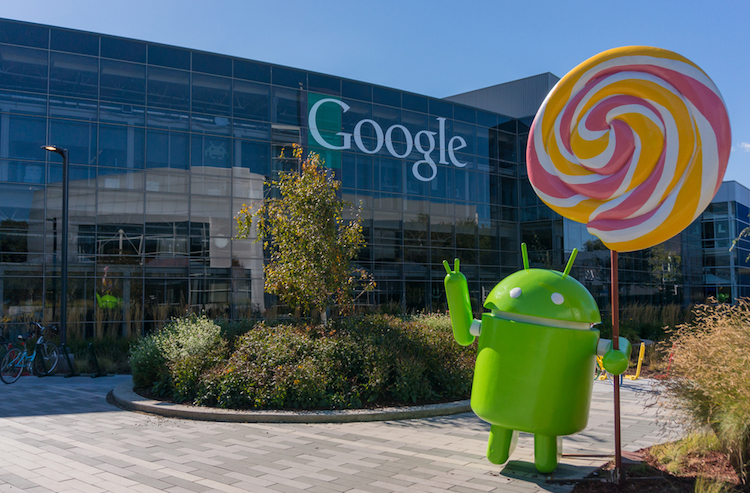Biggest Google Paid Search Changes in 10 Years! The biggest changes to Google AdWords in 10 years are set to launch over the next several months. These changes are easily some of the biggest changes Google has made to AdWords since they launched the Quality Score in 2005 and Enhanced Campaigns in 2013. And they’re on the heels of some already major advertising changes that happened just a few months ago.
Looking Back on The History of AdWords
The introduction of the Quality Score to Google AdWords introduced new complexities to managing a paid search campaign. Prior to Quality Score, PPC management was pretty straightforward – a simple combination of bids and highest clicked ad won the top spot. In 2005 when the Quality Score launched, it changed the way marketers thought about ad copy, correlating landing pages, and so much more. When Enhanced Campaigns launched 8 years later, it rocked our world. And while there have been other changes along the way, they have been noteworthy but not mind-blowing. Then, just a few months ago, Google did away with the right-hand rail ads! In May, at Google’s Performance Summit, they announced that this change has allowed them to focus on a mobile first experience. With more traffic coming from mobile devices, and that number continuing to climb, Google wants to give marketers more opportunities to connect with and convert prospects.Key Takeaways from The 2016 Google Performance Summit
-
Google is focused on a mobile-first world; mobile is now the most important consideration for Google.
-
Device bidding is now available for all devices meaning you will have more control than ever before over bids at the device level.
-
Expanded text ads will now give us more real estate to communicate a compelling message in search ads. Take advantage of this as soon as you can for a competitive advantage.
-
Similar Audiences and Demographics for Search Ads will finally allow us to tap into Google’s trove of user data for search targeting raising its game to compete against Facebook Custom Audiences.
-
For local businesses, advertising on Google Maps is new and improved, making them more visible when consumers are searching and shopping. Did you think free was going to last forever in local results?!
Device Bidding
Why did they do it?
In Google execs’ new mobile-first view, they recognized that the age of mobile has arrived. It’s not coming…it’s here. Advertisers have long been clamoring for the ability to set mobile bids at the device level and this announcement definitely drew the biggest round of applause during the keynote.What does it mean for you?
For the first time ever, you can now set different bids for your desktop ads, your tablet ads, and your smartphone ads. Previously, tablet and desktop bids were one-in-the-same. This means we now have more control over your individual device ads and you can bid them independently or make them dependent on each other. This gives us more flexibility and further enforces Google’s mobile-first stance. We’ll be able to control exactly how much we spend on each device allowing us to optimize by. We’ll be able to control exactly how much we spend on each device allowing us to optimize by device if desired. This also means we’ll need to do some analysis to really understand how the different devices impact your specific sales and where we want to place more emphasis from a bidding perspective.
We’ll be able to control exactly how much we spend on each device allowing us to optimize by device if desired. This also means we’ll need to do some analysis to really understand how the different devices impact your specific sales and where we want to place more emphasis from a bidding perspective.
Expanded Text Ads
Because size matters, we’re now getting bigger (and supposedly better) ads for both mobile and desktop search results.Why did they do it?
In their new mobile-first view, Google found that when it offered more information in mobile ads, users could make a better decision about whether to click. This makes the advertising more efficient for the advertiser and the end-user.What does it mean for you?
It means you have many more characters to communicate with and compel a user to take action on your ad. These new expanded text ads are going to increase to two 30-character headlines (this is up from just a single headline of 25 characters – that’s 35 more characters to work with!) along with an 80 character ad up from 70. Early beta tests by Google revealed longer headlines drove more clicks and better-qualified clicks – this is good for advertisers as we are always seeking to find improved return on ad spend (ROAS). This is extremely good news on a mobile phone where space is tight. It gives paid search advertisers the opportunity to control more real estate on the screen, driving organic listings further down on smartphones (not such good news for organic listings in mobile). What it also means is a lot of work to write expanded ad copy over the coming months. Google hasn’t said exactly how they will roll out these changes yet so we’re still watching and waiting for when and how we’ll be able to implement this new expanded ad format. Here’s a before and after of what the ads will look like for you:
Similar Audiences and Demographics for Search Ads
Similar Audiences will allow us to target lookalike audiences similar to those who have already interacted with your ads in the past. Demographics for Search Ads will allow us to set bid modifiers on your account for both age and gender.Why did they do it?
Google was less forthcoming about this announcement. More of a passing mention during the keynote, but something that has potentially huge, I said HUGE implications. We speculate they did it for a few reasons: → They have already been doing this in Display Network for quite some time. It makes sense for them to finally open it up in search. → They know advertisers are always seeking better ROAS and so as paid search costs continue to rise, this gives us a big lever to improve targeting and therefore reduce CPA and improve ROAS. → They have the data. They know how users behave in search and across their networks and with this, it’s a key differentiator from Facebook. Facebook gives advertisers look-a-like and demographic targeting data that Google has never released. Now, Google is unleashing their coveted data in combination with search intent. One more thing to test in the never ending quest for the best-performing media.
Now, Google is unleashing their coveted data in combination with search intent. One more thing to test in the never ending quest for the best-performing media.
What does it mean for you?
The Demographics for Search Ads are currently available and give us the ability to target by age and gender and we’ll be judiciously testing how this impacts CTR, conversions and overall ROAS; we’ll report back on it as we see returns. Similar Audiences (not yet available) let’s you do a couple of amazing things:- Looks at data about your existing remarketing audience and finds new consumers who share similar interests and behavior and allows us to market to them.
- Enables you to find people who share characteristics with your site visitors. By adding “similar audiences” to your ad group, you can show your ads to people whose interests are similar to those of your site visitors. This allows us to reach new and qualified potential customers!
Advertising on Google Maps
Google is rolling out new ad types that are designed to drive more foot traffic to physical store locations. These ads will be available directly in the Google Maps interface.Why did they do it?
It’s all in the numbers. They have to bridge the gap from the mobile search world to the physical retail sales world; when you see these compelling stats, you’ll understand why:- Around 90% of all global sales will happen in stores, as opposed to online.
- 84% of consumers conduct local searches.
- Almost ⅓ of mobile searches are related to location.
- Location-related searches have been growing 50% faster than mobile searches overall in the past year.
- Google searches (on Google.com and Maps) guide consumers to 1.5 billion destinations every year.
- 3 out of every 4 people who search for something nearby using their smartphone end up visiting a store within a day, and 28% of those searches result in a purchase.
What does it mean for you?
If you have physical, retail locations, we’ll be able to buy ads for you that will be featured directly on Google Maps. The keynote at the Google Performance Summit 2016 showcased real-time in-store promotions and inventory to let consumers know whether the product they need will actually be available when they reach that specific retail location. Google is optimizing the Google Maps experience so that users can see the ads but without making them obtrusive. The new local search ads and “Promoted Pins” will appear within the Google Maps app, on Google Maps mobile, desktop, and tablet sites, and on Google.com Expanded Maps results. In the Google Maps app, a single ad with a purple and label will be featured in the top spot above the organic results and with a pin on the map as featured here: Not all of these changes are available yet. As these exciting updates (and other announcements from the Google Performance Summit 2016) roll out over the next few months, if you’re a current Bullseye Strategy client, we’ll be optimizing your account accordingly and updating you in our routinely scheduled meetings and reporting.
Not all of these changes are available yet. As these exciting updates (and other announcements from the Google Performance Summit 2016) roll out over the next few months, if you’re a current Bullseye Strategy client, we’ll be optimizing your account accordingly and updating you in our routinely scheduled meetings and reporting.







